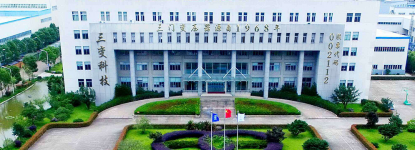A. Overall Description of Key Challenges in Enterprise Production Management
In the realm of enterprise production management, companies often encounter a series of complex and intertwined challenges that impede their efficiency and growth. These pain points not only affect day - to - day operations but also have long - term implications for the company's competitiveness in the market.
The following are some of the most prominent pain points:
- Low production efficiency: Manual processes, outdated equipment, and inefficient workflows can lead to slow production speeds and wasted resources.
- High production costs: Excessive raw material waste, high labor costs, and inefficient energy consumption can drive up production costs.
- Poor quality control: Inadequate inspection processes, lack of quality standards, and inconsistent production methods can result in sub - standard products.
- Difficulty in inventory management: Overstocking or understocking of raw materials and finished goods can lead to increased costs and production delays.
- Ineffective communication and collaboration: Siloed departments, lack of real - time information sharing, and poor communication channels can hinder teamwork and decision - making.
These pain points are interrelated and can create a vicious cycle that is difficult to break. For example, low production efficiency can lead to high costs, which in turn can affect quality control and inventory management. Therefore, addressing these pain points requires a comprehensive and integrated approach.
B. Case Analysis of Key Challenges in Enterprise Production Management
1. Low production efficiency
Low production efficiency is a common pain point in many enterprises. In a traditional production environment, manual data entry, paper - based processes, and lack of automation can slow down the production line. For example, workers may spend a significant amount of time recording production data on paper, which is then manually entered into a system. This not only wastes time but also increases the risk of errors.
Moreover, inefficient equipment and outdated technology can also contribute to low production efficiency. For instance, old machinery may break down frequently, causing production delays. In addition, lack of proper maintenance and calibration can lead to sub - optimal performance.
For example, a manufacturing company used to rely on manual processes for task assignment and progress tracking. Workers had to report their progress verbally or on paper, which was time - consuming and inaccurate. After implementing a digital production management system, the company was able to automate these processes, reducing the time spent on administrative tasks and increasing production efficiency by 30%.
2. High production costs
High production costs can erode a company's profit margins. One of the main causes of high production costs is excessive raw material waste. In some cases, companies may over - order raw materials or use them inefficiently, leading to unnecessary expenses.
Labor costs can also be a significant factor. Inefficient work arrangements, over - staffing, and lack of productivity incentives can drive up labor costs. Additionally, high energy consumption due to outdated equipment and inefficient production processes can add to the overall cost.
For example, a furniture manufacturer was facing high raw material costs due to inaccurate cutting and waste. By implementing a more precise cutting system and optimizing the production layout, the company was able to reduce raw material waste by 20%, resulting in significant cost savings.
3. Poor quality control
Poor quality control can damage a company's reputation and lead to customer dissatisfaction. Inadequate inspection processes can allow defective products to reach the market, which can result in product recalls, returns, and lost sales.
Lack of quality standards and inconsistent production methods can also contribute to poor quality. For example, different workers may have different ways of performing the same task, leading to variations in product quality.
For example, a food processing company had a problem with inconsistent product quality. By implementing a quality control system that included regular inspections, standardized production processes, and employee training, the company was able to reduce the number of defective products by 50%.
4. Difficulty in inventory management
Inventory management is a critical aspect of production management. Overstocking can tie up capital and increase storage costs, while understocking can lead to production delays and lost sales.
In many enterprises, inventory management is still done manually, which can be prone to errors and inefficiencies. Lack of real - time inventory data and inaccurate forecasting can also make it difficult to maintain optimal inventory levels.
For example, a clothing manufacturer used to over - stock certain styles of clothing, resulting in high storage costs. After implementing an inventory management system that provided real - time data and accurate forecasting, the company was able to reduce its inventory levels by 15% without sacrificing production.
5. Ineffective communication and collaboration
Effective communication and collaboration are essential for smooth production operations. However, in many enterprises, departments operate in silos, with limited information sharing and poor communication channels.
This can lead to misunderstandings, delays in decision - making, and duplication of efforts. For example, the production department may not be aware of changes in customer orders, leading to production of the wrong products.
For example, a construction company had problems with communication between the design, engineering, and construction teams. By implementing a project management platform that allowed real - time information sharing and collaboration, the company was able to reduce project delays by 25%.
C. Product Introduction
1. ERP Systems
Enterprise Resource Planning (ERP) systems are comprehensive software solutions that integrate various business processes, including production management, finance, human resources, and supply chain management. ERP systems can provide real - time visibility into all aspects of the business, enabling companies to make informed decisions.
ERP systems can solve many production management pain points by automating processes, improving data accuracy, and providing better coordination between different departments. For example, they can automate procurement processes, ensuring that raw materials are ordered in a timely manner. However, ERP systems can be complex and expensive to implement, and may require significant IT resources for maintenance and customization.
2. MES Systems
Manufacturing Execution Systems (MES) are designed to manage and monitor the production process in real - time. MES systems can track production progress, collect data on equipment performance, and ensure compliance with quality standards.
MES systems can improve production efficiency by providing real - time feedback on production status, allowing for quick adjustments to the production process. They can also help with quality control by monitoring production parameters and alerting operators when deviations occur. However, MES systems may be difficult to integrate with existing systems and may require specialized knowledge for configuration.
3. WMS Systems
Warehouse Management Systems (WMS) are used to manage inventory in warehouses. WMS systems can track inventory levels, locations, and movements in real - time, enabling companies to optimize their inventory management.
WMS systems can reduce inventory costs by preventing overstocking and understocking. They can also improve order fulfillment accuracy by ensuring that the right products are picked and shipped in a timely manner. However, WMS systems may require significant upfront investment in hardware and software, and may need to be customized to fit the specific needs of the company.
4. No - code Platform: Wingent
Wingent is a no - code platform that can effectively address the pain points in enterprise production management. It offers a flexible and customizable solution without the need for extensive coding knowledge.
D. Wingent's Function in Solving Production Management Pain Points
Wingent: A Powerful Solution for Addressing Production Management Pain Points
Wingent is a versatile no - code platform that has proven to be highly effective in solving a wide range of production management pain points. With its intuitive interface and powerful features, Wingent can revolutionize the way enterprises manage their production processes.
1. Streamlining Production Processes
Wingent allows companies to automate manual processes and create efficient workflows. For example, workers can use the platform to scan product or work - order QR codes, quickly reporting completed quantities, working hours, and other production - related information. This significantly reduces the time and effort required for data entry, improving production efficiency.

By using Wingent, companies can also set up automated alerts for production anomalies. For instance, if a production task exceeds the preset time limit, the system can immediately send an alert to the relevant manager via SMS or app push notifications. This enables managers to take timely action and adjust the production plan, ensuring that production stays on track.
2. Enhancing Quality Control
Wingent provides a platform for implementing strict quality control measures. The system can store electronic work - orders permanently, allowing companies to easily access historical production data for auditing purposes. This is particularly useful when dealing with quality issues, as it enables companies to trace back the production process and identify the root cause.

Moreover, Wingent can be used to define quality standards and inspection procedures. Workers can use the platform to record inspection results, and any non - compliant products can be flagged immediately. This helps to ensure that only high - quality products are released to the market, improving customer satisfaction and the company's reputation.
3. Optimizing Inventory Management
Wingent can integrate with inventory management systems to provide real - time visibility into inventory levels. This allows companies to optimize their inventory levels, reducing the risk of overstocking or understocking.

For example, when a certain raw material reaches a low - stock level, the system can automatically generate a purchase order, ensuring that the production process is not interrupted. Additionally, Wingent can help in tracking inventory movements, such as incoming and outgoing goods, which is essential for accurate inventory accounting.
4. Improving Communication and Collaboration
Wingent offers a centralized platform for communication and collaboration among different departments. All relevant production information, such as production schedules, task assignments, and quality control results, can be shared in real - time on the platform.

This eliminates the need for multiple communication channels and reduces the chances of miscommunication. For example, production managers can easily assign tasks to workers, and workers can report their progress directly on the platform. This real - time interaction improves teamwork and decision - making, leading to more efficient production processes.
In summary, Wingent effectively addresses the key pain points in enterprise production management, including low production efficiency, poor quality control, difficult inventory management, and ineffective communication and collaboration. By leveraging the power of Wingent, companies can streamline their production processes, reduce costs, and improve overall competitiveness.
Enterprise production management is fraught with challenges such as low efficiency, high costs, poor quality control, difficult inventory management, and ineffective communication. These pain points can significantly impact a company's performance and competitiveness. However, through the use of advanced technologies and modern management tools, such as ERP, MES, WMS systems, and the Wingent no - code platform, companies can effectively address these issues.
Wingent, in particular, offers a comprehensive and flexible solution. It can streamline production processes, enhance quality control, optimize inventory management, and improve communication and collaboration. With its intuitive interface and powerful features, Wingent enables companies to make data - driven decisions and achieve greater efficiency and productivity.
In conclusion, by embracing these solutions, enterprises can transform their production management processes and gain a competitive edge in the market.
Reference
[1] 三变科技 | 顶顶有名的变压器制造商,是这样用轻流无代码实现“降本增效”的 https://example.com/article1 [2] 无代码在数字化首帆动力的落地应用 https://example.com/article2 [3] 一小时上线手机扫码报工系统,直击痛点! https://example.com/article3